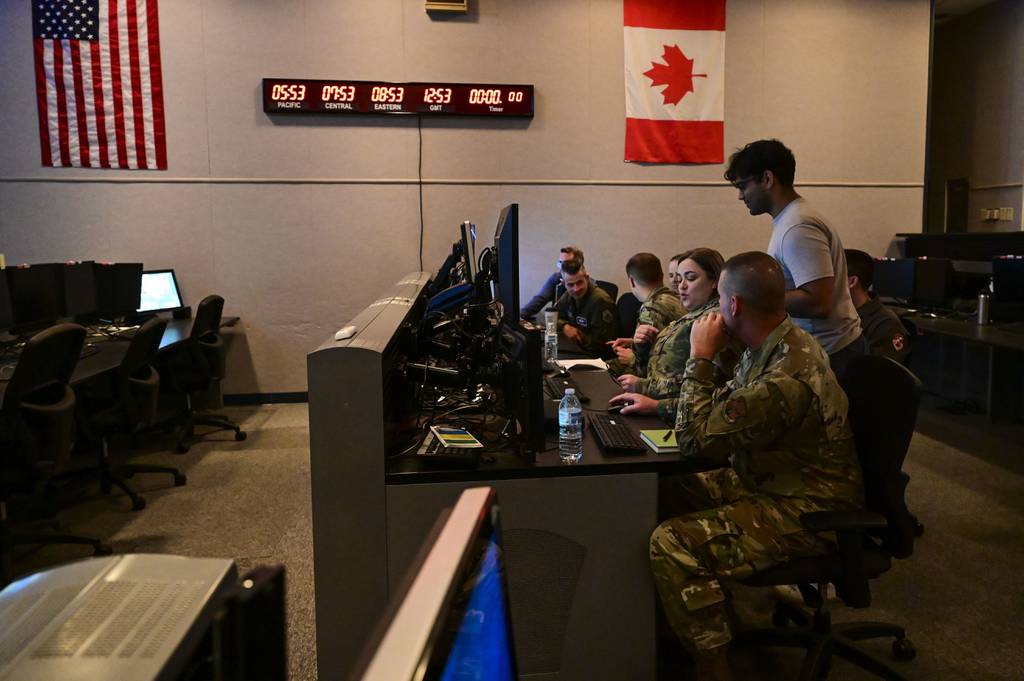When the Pentagon revealed it had delivered a baseline version of its marquis advanced command-and-control capability earlier this year, it proved it could quickly deliver a solution to a specific set of C2 requirements through focused experimentation.
The milestone was significant in that it represented a shift in the Defense Department’s approach to connecting military forces across operational domains, known as Combined Joint All Domain-Command and Control, or CJADC2.
Whereas DOD leaders had previously focused — and struggled to show progress — on the ultimate goal of full interoperability, this time they honed in on identifying capabilities to address operators’ most urgent problems and workflows and vetting them through a regular C2 exercise series known as Global Information Dominance Experiments, or GIDE.
Now, the Defense Department’s Chief Data and AI Officer Radha Plumb wants to expand on that work in two ways: targeting more of the department’s C2 capability needs and developing an enduring process through which companies can propose solutions and DOD can evaluate them.
Plumb spoke with reporters July 16 on the sidelines of DOD’s first-ever industry day aimed at helping companies understand its near-term advanced C2 requirements and how they can showcase potential solutions through GIDE.
“We want to bring in more technologists and technology solutions to compete in those venues, so that we can get a better option set of solutions,” she said.
The department to date has conducted 11 GIDE events, each with a particular theme or focus — which is generally classified — connected to a capability gap that the military services and combatant commands have identified. Plumb’s office leads these campaigns, running one every three months.
In the past, the team has reached out to a limited pool of companies to see what solutions they might have to those gaps and then integrated those into the experiments. For example, during its experimentation campaign to validate the CJADC2 baseline capability set last year, the department worked with more than 20 firms.
For future GIDEs — and possibly even the next event in September — Plumb hopes to incorporate tools from a broader set of companies, to potentially include some firms her office engages with during the industry day.
Plumb’s office will use its acquisition hub, called Tradewinds, to communicate its requirements to industry, solicit capabilities and select the most promising to participate in experimentation events.
“If they perform well and they meet a sort of scaled capability need, then we can go through our normal kind of acquisition processes to get broader scaled deployments of them,” she said. “But we’ll also have the prototype vehicle acquisition vehicle to continue that testing and experimentation series.”
Plumb would not discuss what specific GIDE technologies the department will include in its next experimentation set, but operators are generally looking for things like visual interfaces and tools that allow them to integrate data faster and more efficiently to inform decision making.
“We evaluate the technology’s performance both on the overall success of it, but then on whether that candidate technology is the right thing to solve that capability need for the that particular area,” she said.
The experimental applications DOD will end up buying and scaling through this process represent just one category of tools the department wants to integrate into its advanced C2 ecosystem, known as the Open Data and Applications Government-owned Interoperable Repositories, or Open DAGIR.
Plumb announced in late May the department will use Open DAGIR to not only vet experimental tools, but to buy data infrastructure as well as more mature, enterprise-level licenses for applications that will be used by a broad swath of DOD users.
“Open DAGIR ensures the Department can leverage the innovative solutions from the world-class software developers in both the traditional and nontraditional industrial base to create capabilities for our warfighters and decision makers,” she said in a May 30 press release. “We aim to give industry front-row access to both our data and our users to develop relevant and timely software for decision advantage.”
Courtney Albon is C4ISRNET’s space and emerging technology reporter. She has covered the U.S. military since 2012, with a focus on the Air Force and Space Force. She has reported on some of the Defense Department’s most significant acquisition, budget and policy challenges.







